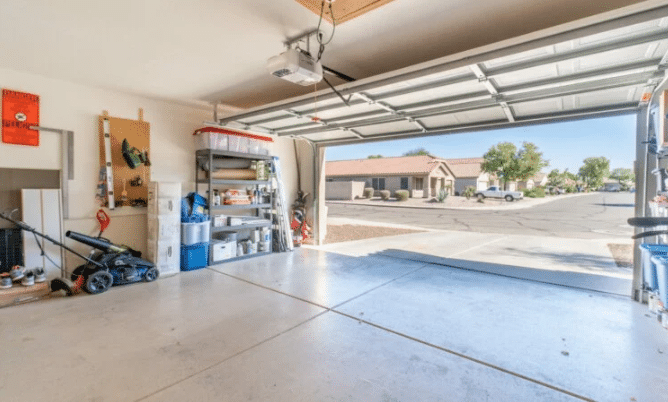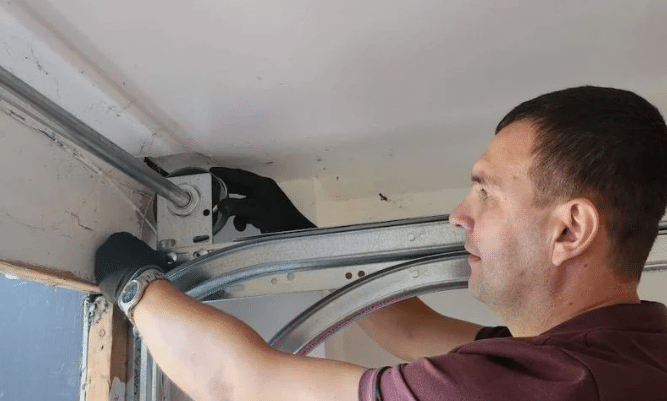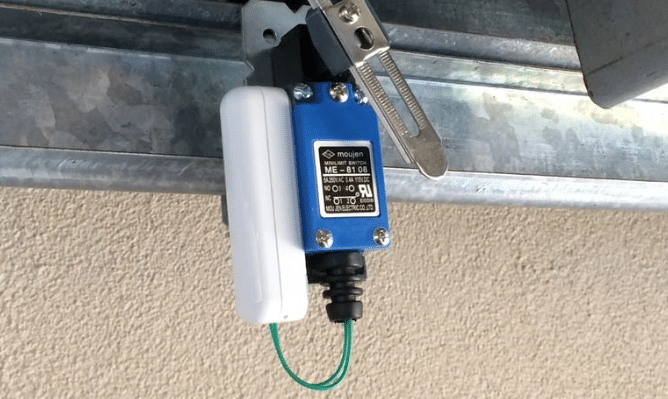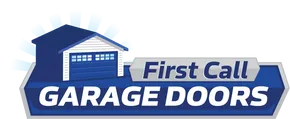A garage door serves a bigger purpose than just moving up and down. It protects your home, adds curb appeal, and supports everyday convenience. Learning the anatomy of garage door systems helps homeowners identify potential problems early, enhance safety, and extend the lifespan of their garage doors. Every part, from the rollers to the remote, works together to help your garage door run safely, smoothly, and dependably.
This comprehensive guide explains every garage door component, how its parts work together, and how to maintain them in top condition. You will also discover common problems, signs of wear, and the best times to repair or replace. Whether you’re maintaining or upgrading, this guide provides the knowledge to make informed decisions and avoid costly breakdowns.
What is the Anatomy of a Garage Door?

The anatomy of a garage door includes more than just panels. It’s a complete garage door system comprising essential components such as tracks, springs, rollers, and cables. These parts all work together to help your garage door open, close, and lock safely and smoothly every time.
Every part of the garage door mechanism plays a specific role. Tracks guide the door, springs handle the weight, rollers keep movement smooth, and the opener does the heavy lifting. When one part breaks or wears out, it can affect how your entire garage door works and sounds.
When all garage door parts work properly, your door operates quietly, stays aligned, and lasts longer. Understanding how each part functions helps you identify and resolve problems more quickly and effectively take care of your door. It also enables you to decide when it’s time to repair or replace something.
Key Components of a Garage Door
Each part of the garage door plays a unique role in functionality and safety. Let’s explore the most critical pieces you need to know.
Garage Door Panels
Garage door panels form the visible front of your garage and provide both protection and curb appeal.
- Steel Panels – Durable and low maintenance.
- Aluminum Panels – Lightweight and rust-resistant.
- Wood Composite Panels – Stylish and well-insulated.
They insulate your garage, secure your property, and boost your home’s appearance. Panels may have single-layer, double-layer, or triple-layer insulation.
Cracked or dented panels may indicate that other garage door parts are under strain or not working properly. Inspect regularly to avoid costly issues.
Tracks and Rollers
Tracks guide the garage door’s movement while rollers help it glide smoothly along the track system.
- Vertical Tracks – Guide the door as it lifts.
- Horizontal Tracks – Support the door when open.
Roller Types:
- Nylon Rollers – Quiet and ideal for residential use.
- Steel Rollers – Durable, best for heavy-duty doors.
Watch for signs such as loud operation, shaking, or uneven movement, which may indicate worn rollers or misaligned tracks.
Springs (Torsion vs. Extension)
Springs offset the door’s weight, helping it open and close smoothly and safely.
- Torsion Springs – Mounted above the door, with tighter control and a longer lifespan.
- Extension Springs – Run parallel to tracks, suited for lighter doors.
These springs are under extreme tension. Never attempt DIY replacement unless trained. Mishandling can result in serious injury.
Torsion springs typically last longer and are safer in case of breakage due to built-in containment. Extension springs can whip if they snap.
Cables and Pulleys

Cables and pulleys support door movement by distributing the tension provided by the springs.
- Lift Cables – Connect to the bottom bracket of the door.
- Pulleys – Reduce friction and improve door control.
Inspect cables for fraying, rust, or slack, leading to complete failure or an unbalanced door.
Garage Door Opener
The opener activates your door’s motorized lifting and lowering, triggered by a remote or wall control.
Motor Types:
- Chain-Drive – Affordable but noisy.
- Belt-Drive – Quiet and ideal for attached garages.
- Screw-Drive – Powerful, fewer parts.
- Direct-Drive – Ultra-quiet and low-maintenance.
Smart Features in 2025:
- Wi-Fi control apps.
- Battery backup for outages.
- Rolling code encryption for security.
Always keep your opener’s firmware updated to avoid vulnerabilities and stay in line with trusted home automation standards.
How the Anatomy of a Garage Door Works Together Step-by-Step
Your garage door looks simple, but its movement depends on perfectly timed steps. Here’s how the garage door mechanism works together whenever you use it.
1. Signal Sent to Opener
Pressing your wall button or remote sends a wireless signal to the garage door opener. This activates the system and tells it to begin moving.
2. Motor Starts Lifting
The garage door opener motor turns on and starts pulling the trolley arm. This lifting motion initiates the door’s upward movement in a safe and controlled manner.
3. Spring Supports Weight
The torsion spring system stores energy when the door is closed. As it unwinds, it lifts most of the door’s weight, helping the opener do less work.
4. Cable Balance Tension
Strong garage door cables work with pulleys to balance tension evenly. These parts help lift the door steadily and prevent it from slamming down or jerking sideways.
5. Rollers Guide Door
Durable garage door rollers ride inside metal tracks as the door rises. Clean and lubricated rollers ensure smooth movement and reduce wear on the entire system.
6. Limit Switch Stops Lift

The limit switch tells the motor when the door is fully open or closed. This safety feature prevents the system from overworking and protects against potential damage.
When each garage door part works in sync, you get smooth operation, fewer repairs, and a longer-lasting garage door system that stays safe and reliable every day.
Troubleshooting the Anatomy of Garage Door: Issues by Component
Even high-quality garage doors can show signs of wear over time. Here’s how to spot common issues in each part of the garage door system and what to do about them.
Panels
If your garage door panels are dented, warped, or peeling, it might be from impact or weather. Check for misalignment or damage needing repair or replacement.
Tracks & Rollers
The noisy operation, wobbling, or rusted garage door rollers and tracks could mean a buildup of wear. Try cleaning them first. If the noise persists, it may indicate that some parts need to be replaced.
Springs
A broken garage door spring can make the door feel heavy or cause it to slam shut. This repair is dangerous and should only be handled by professionals.
Cables
Worn or loose garage door cables can cause the garage door to shake and move unevenly. A snapped cable might cause the door to fall suddenly. Stop using the door and call for help.
Opener
Garage door opener problems include flashing lights, no response, or Wi-Fi drops. Before calling a technician, try resetting the system or reprogramming the remote.
Safety Reminder
Before checking parts, always unplug the opener and make sure the door is fully closed. Stay safe while inspecting your garage door for visible damage.
Understanding the anatomy of garage doors helps you identify problems early and keep everything functioning properly. Call a trusted garage door professional when needed for safety and performance.
Proven Maintenance Tips for Garage Door Parts Longevity
Regular garage door maintenance helps your system last longer, run smoother, and avoid expensive repairs. A few simple steps each month can make a big difference.
1. Visual Inspection
Check for rust, cracks, loose tracks, or frayed cables. Catching these early prevents bigger problems. Inspect all visible garage door parts every month for signs of wear.
2. Lubrication
Apply garage door lubricant to rollers, hinges, and bearings every 6 months. Use silicone spray or white lithium grease. Never lubricate springs or plastic hardware.
3. Balance Test
Unplug the garage door opener and try lifting the door by hand to the halfway point. The garage door balance is off and needs adjusting if it moves up or down.
4. Hardware Tightening
Loose bolts or brackets can affect door alignment. Use a wrench to tighten garage door hardware, but stop if anything feels too tight or stripped.
5. Professional Inspection
Every 1 to 2 years, schedule a garage door tune-up by a certified technician. They can spot hidden issues, adjust springs, and improve long-term performance.
When to Repair or Replace Garage Door Parts
Knowing when to choose garage door repair over a complete garage door replacement helps protect your budget and home. Here’s how to decide based on specific issues.
| Repair Situations | Replacement Situations |
| One broken garage door spring | Garage door panels are cracked, warped, or bowed |
| Noisy or shaky garage door rollers | Multiple springs or cables have failed |
| Minor dents or slight track misalignment | The garage door opener is outdated and lacks safety tech |
| Occasional opener issues | Constant repairs are adding up and not solving the problem |
Choosing the right fix enhances performance and prevents more serious problems. Upgrading old parts boosts efficiency, safety, and the long-term value of your garage system.
Frequently Asked Questions
What are the main parts of a garage door system?
The garage door system includes panels, tracks, rollers, springs, cables, an opener, and sensors. These parts work together to lift and lower the garage door smoothly and with controlled movement.
How do garage door tracks and rollers work together?
Garage door tracks and rollers guide the door as it moves up and down. The rollers glide inside the metal tracks, keeping the door aligned and steady during operation.
What safety features should a garage door have?
A safe garage door system should include auto-reverse sensors, manual release handles, and tamper-resistant brackets. These features protect your family and prevent accidents or injuries.
What type of opener is best for a quiet garage?
A belt-drive garage door opener operates with minimal noise, making it an excellent choice for homes with garages near bedrooms or main living spaces. It runs smoothly and produces less noise than chain-drive models.
How often should garage door parts be inspected?
You should inspect garage door parts monthly for signs of wear, such as rust, fraying, or noise. For best results, professional tune-ups are also recommended once a year.
Conclusion
Understanding the anatomy of garage doors gives you the confidence to handle basic care, spot problems early, and make better decisions about repairs or upgrades. Each part, from springs to openers, plays a key role in smooth and safe operation. When everything works together, your garage door lasts longer and performs better.
If your door is making noise, moves unevenly, or stops working, it could be a sign that one of the parts is failing. Catching these signs early can help prevent major damage and high costs. Trust First Call Garage Doors for professional garage door repair in Richmond, TX for prompt and dependable service.
We are proud to serve homeowners who want dependable service and clear answers. Whether you need minor repairs or full system replacement, our expert team is ready to help. Call First Call Garage Doors today and get peace of mind knowing your garage door system is safe and built to last.
End Note
At First Call Garage Doors, we help homeowners understand the anatomy of garage door systems and take better care of their setups. With quality parts, trusted service, and friendly experts, we handle everything from garage door repair to routine maintenance. Every job is handled carefully so your garage door runs safely and smoothly.
Whether you need broken springs fixed, a new garage door installed, or a full door replacement, our team has the skills to do it right. We also offer garage door opener repair, keypads, and expert garage door service that keeps your system working like new across all service areas.
Homeowners can explore our full range of garage services, meet our team on the About Us page, and view recent work in the gallery. Our blog offers helpful tips and updates, which can be found on Instagram and Linktree. When it’s time to upgrade or repair, the Contact Us page is just one click away. First Call Garage Doors is ready to help keep your garage door in top shape.
First Call Garage Doors
20527 FM 1093 Unit B205, Richmond, TX 77407, United States
+17132482684
